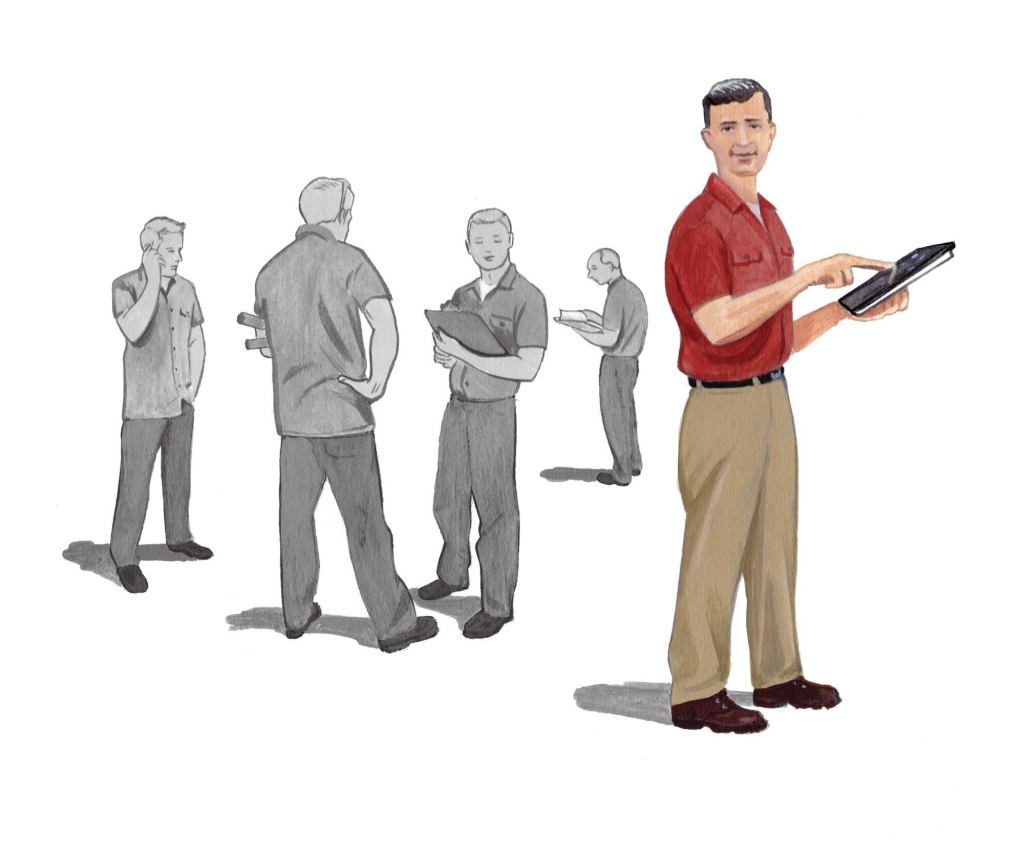Lagging volume, anemic margins, brutal hours, stress. It’s a scenario that’s faced countless custom builders for long enough now to present a growing hazard of demoralization and burnout. But what to do about it? Many custom builders have taken smaller jobs and shifted their project mix to include more remodels, but one suspects they’re still hoping they’ll wake up tomorrow and find it’s 2006 again. Some have taken a bolder—and perhaps more realistic—approach, fundamentally altering or expanding their business model to seize new opportunities. Those who have succeeded provide inspiration, and evidence that custom builders have better options than praying for another housing bubble.
As the storm clouds of the market meltdown were gathering, Mark Braunsdorf, owner of Delaware, Ohio–based Compass Homes, did something that may have looked crazy at the time: He built a model home. Aided by advantageous terms from a developer, Braunsdorf moved down-market from $800,000-and-up custom homes to semi-custom projects in the $500,000 range. Stocking his design department with newly available talent, he produced a portfolio of customizable plans and went toe-to-toe with high-end production builders. “We figured out how to build the houses more cost efficiently,” he says. “We show the classic American shapes but keep the roofs simple and keep the offsets to a minimum. And we hold the design in house to keep it from getting out of control.”
Compass still builds million-dollar custom homes, Braunsdorf says, but to grow its volume, the company had to venture below what he calls “the BMW level.” In comparison, he says, “our [smaller]houses are Acuras. We had to adjust to the market and still be custom.” The result is a company that has grown smartly for each of the past four years. “I attribute that to the fact that we went out and marketed,” Braunsdorf says. “We turned into the wind, if you will. We invested into the downturn, and that’s helped us sell.”
For Portland, Ore.–based design/build firm Green Hammer, the summer and fall of 2008 tracked the perilous fortunes of the industry. “In July we had 300 percent of our 2008 revenue booked for 2009,” says Green Hammer founder and president Stephen Aiguier, “and between October and December, we lost 100 percent of those bookings.” Rather than shrink his business, though, Aiguier doubled down on its core competency: green building. “I spent the profits that we did have on an insulation truck and home performance equipment,” says Aiguier, who also invested in training his crews to do home-performance assessments and energy retrofits. Before the crash, he had interviewed two designers. “One of them had a Building Performance Institute certification,” he says. “I hired him.”
Expanding into energy services “kept us in the game,” Aiguier says. “And now it’s become a value-added part of the business. It feeds our standardized weatherization jobs, but our crews are also trained to do state-of-the-art new buildings,” including the Passive House–certified projects that are the basis of the company’s revived new-home business. Like Braunsdorf, Aiguier diversified in a way that not only averted an immediate crisis, but also positioned his company for growth.
Such stories represent the silver lining of the recession, says Jim Schug, a senior consultant with the construction industry consulting firm FMI. “One of the best things we’ve seen to come out of downturns is that organizations become more adaptable,” Schug says. With their technical and communication skills, client and subcontractor relationships, and design sense, custom builders are well positioned to diversify into a number of high-end, high-touch fields: tenant improvements, churches, even medical facilities.
“They’ve got some good strategic options,” Schug says. “The questions to ask are ‘Where’s the market?’ and ‘What are our strengths?’” Chief among those strengths should be personnel—and not only in technical skills. “Every employee is in business development,” Schug says. “Everyone knows somebody. Everyone should be thinking, ‘How do we turn that into new work?’ Companies that have been successful have invested over time in their people and their leadership.” The goal, he says, is not merely to weather a rough patch, but to build an adaptable company. “Maybe you need to hire new talent; maybe you need to start a new division. But I think the outlook is positive for people who are willing to invest in that change.”



